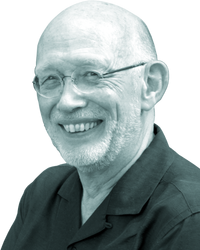
Over het archief
In 2012 verloren we Jean Jacques Peters, voormalig ingenieur van het Waterbouwkundig Laboratorium (1964 tot 1979) en internationaal expert in sedimenttransport, rivierhydraulica en -morfologie. Als eerbetoon aan hem hebben we potamology (http://www.potamology.com/) gecreëerd, een virtueel gedenkarchief dat als doel heeft om zijn manier van denken en morfologische aanpak van rivierproblemen in de wereld in stand te houden en te verspreiden.
Het merendeel van z’n werk hebben we toegankelijk gemaakt via onderstaande zoekinterface.
| [ meld een fout in dit record ] | mandje (1): toevoegen | toon |
 |
| one publication added to basket [252245] | |
| Morphological management, a concept for a holistic management of estuaries [PRESENTATION] Plancke, Y.; Ides, S. (2015). Morphological management, a concept for a holistic management of estuaries [PRESENTATION]. Presented at the Dunes and Estuaries Conference 2015, Bruges. Flanders Hydraulics Research: Antwerp. 16 slides pp.
|
| Beschikbaar in | Auteurs |
| |
| Documenttype: Presentatie | |
| Auteurs | Top | |
|
| Abstract |
In 2001 the Dutch and Flemish governments published a long-term vision (LTV) for the Scheldt estuary. That vision defined several goals focusing on safety against flooding, port accessibility and nature. Parallel with this LTV, an independent expert team, appointed by the Antwerp Port Authority, investigated the possibility of a navigation channel enlargement. They concluded that it was possible, although a new approach was necessary. Therefore they proposed a new strategy for the disposal of dredged sediment: based on their experience all over the world, they proposed to ‘use’ dredged sediment (sand) to create benefits for other functions (in casu ecology). Flanders Hydraulics Research investigated their idea and the feasibility of their concept was proved. It was finally incorporated in one of the alternatives within the environmental impact assessment of the channel enlargement in de Scheldt estuary, and was found to be the most environment-friendly alternative. Since 2010, dredged sediments have been disposed along different sandbars in the Westerschelde, changing the flow patterns and creating low dynamic habitats. Over the following years, ongoing monitoring should allow the evaluation of the success of this new concept on the longer term. In finding the optimal management strategy for an estuary, policymakers have to deal with different functions, some having conflicting objectives. Morphology should be seen as the key for other functions, and morphological management the concept to realize win-win situations for different estuarine functions (‘holistic approach’). Although this concept may seem to be simple, several challenges remain: understanding of the morphological evolution is one of the more difficult scientific aspects; both numerical and physical scale models bring about important uncertainties, and experience is and will remain crucial in understanding the morphological functioning of estuaries. |
| Top | Auteurs |

